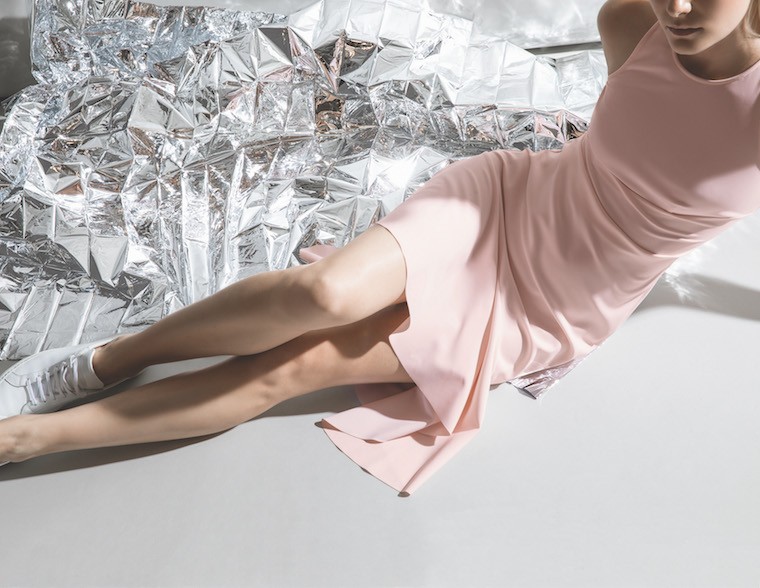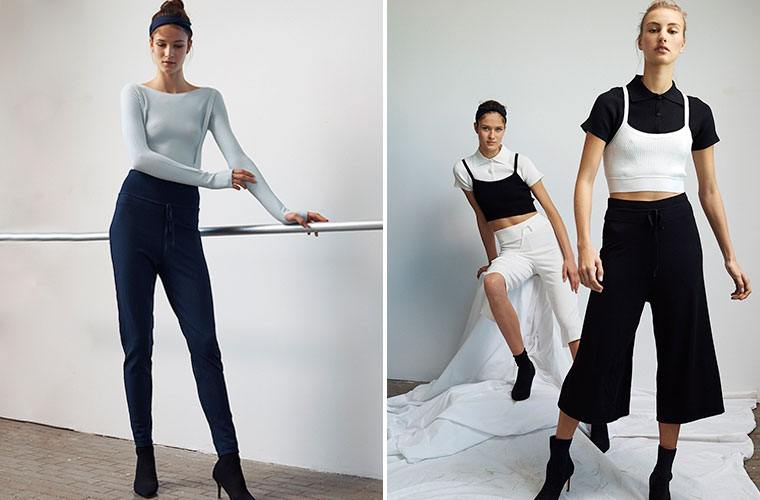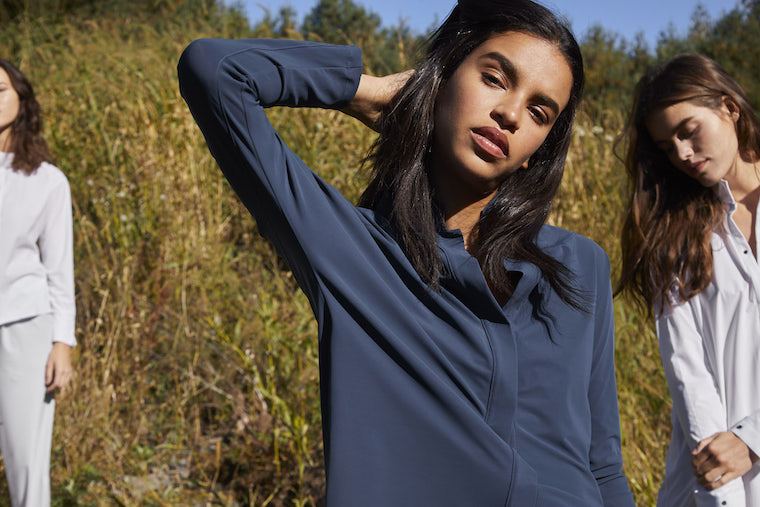The Plus Factor: Why Your Entire Closet May Soon Be Made up of Fitness Fashion Brands
Now, of course, those ideas seem as passé as a fanny pack. (Ooh, wait…) According to McKinsey’s Global Fashion Index 2017, the activewear market is growing faster than any other fashion category, with a 6 to 7 percent boost in 2018 (compared to 2 to 3 percent growth expected for the regular fashion and footwear market). And yes, the traditional fashion world has taken notice—which is why you're seeing things like sneakers on runway at the Louis Vuitton show in Paris.
“There are a lot of active references in fashion now,” says Live the Process founder Robyn Berkley, citing the yoga-pose prints in Dior’s resort 2018 collection and a boxing-inspired pop-up shop that’s coming soon to London’s Selfridges department store. Not to mention the fact that every designer shoe label now makes a luxe sneaker, while fashion heavyweights from Moda Operandi to Isabel Marant are launching activewear collections of their own—to varying degrees of functionality.
It feels like we're witnessing the birth of an entirely new fashion industry segment: one that bridges the gap between athleisure and ready-to-wear.
But while the designer expansion into your leggings drawer and sneaker collection has gotten the most headlines, the most important trend may be going in the other direction—with activewear brands treading on what was once considered strictly fashion territory, and taking bigger creative risks in the process. Their goal? To dominate their customers’ entire closets, and not just the sections reserved for HIIT class and hygge hangouts. In fact, it feels like we're witnessing the birth of an entirely new fashion industry segment: one that bridges the gap between athleisure and ready-to-wear.

“If you talk to any of the [activewear brand] founders, they all have this vision for owning the majority of people's wardrobes and [creating apparel] to be worn in multiple contexts,” says Carbon38 co-founder and CEO Katie Warner Johnson.
Johnson doesn't like to refer to Carbon38's namesake line as "athleisure" anymore—she thinks it's too limiting—while Berkley likens today’s active market to contemporary fashion’s early days in the mid-2000s, when designers like Alexander Wang and Phillip Lim arrived on the scene offering a completely new category between luxury labels and mass-market mall stores.

{{post.sponsorText}}
For example, at the end of February, Live The Process will be introducing a full line of knitwear alongside its signature unitards and high-waisted leggings. (As one of the first fitness fashion labels to make inroads at Barneys and Net-a-Porter, it's a line extension that makes perfect sense.)

And Aday's ethos—work- and travel-friendly silhouettes rendered in sweat-friendly technical fabrics—has proven more than successful, with a recent $2 million investment by H&M. The brand's latest riff on the "out-of-studio" concept is inspired by the needs of a modern activist. (That’s to say profesh, yet still breathable, comfortable, and easy to care for.) Skinny jeans, maxidresses, and leather jackets are now on the racks at Athleta—items that wouldn't look out of place at its parent company, Gap. And at Carbon38, amidst luxe lace-up leggings and cropped tanks, you can now find tailored cigarette pants and little black dresses in performance fabrics sourced from Italy and Japan. In fact, says Johnson, 30 percent of the retailer’s product mix is now made up of clothes that aren't made to do burpees in.
Skinny jeans, maxidresses, and leather jackets are now on the racks at Athleta—items that wouldn't look out of place at its parent company, Gap.
As fitness fashion players step outside of the gym bag in this way, they're operating more like traditional fashion houses. For instance, it's now common for athleisure labels to create seasonal collections informed by the runways. “Everyone’s definitely reading the trend reports and incorporating the colors of the season and new details and construction techniques,” says Johnson.
You might say they’re following the lead of Athleta and Sweaty Betty, which have both done exactly this since their respective launches in 1998. “Our design team have always followed the shows and [trend forecasts], alongside finding our own inspiration through travel and London street style,” says Sweaty Betty founder Tamara Hill-Norton. Adds Athleta's VP of Design, Sarah Carlson: "Our catalog is written and styled editorially and we’ve even participated in Fashion Week. Blending technical and performance expertise with beautiful, fashionable design elements... is at our core and what our customers come to us for."

One thing’s for sure: As the lines between work, wellness, and socializing continue to blur, we can expect to see activewear brands continue to reach for a bigger stake in women's closets—and their lives in general. “We’re on the frontier of the next generation of ready-to-wear,” says Johnson of Carbon 38. Soon, we may just be referring to our favorite athleisure companies as fashion labels—no “fitness” qualifier necessary.
Need to make room in your closet for all this new gear? Here's how to make bank by reselling your activewear online. Then, finish off your look with one of 2018's biggest sneaker trends.
Loading More Posts...